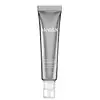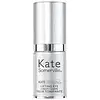What's inside
What's inside
 Key Ingredients
Key Ingredients

 Benefits
Benefits

 Concerns
Concerns

 Ingredients Side-by-side
Ingredients Side-by-side

Water
Skin ConditioningCaprylic/Capric Triglyceride
MaskingButyrospermum Parkii Butter
Skin ConditioningPropanediol
SolventArachidyl Alcohol
EmollientCetearyl Isononanoate
EmollientGlycerin
HumectantIsododecane
EmollientSqualane
EmollientEthylhexyl Palmitate
EmollientBehenyl Alcohol
EmollientCetearyl Alcohol
EmollientGlyceryl Stearate
EmollientMicrocrystalline Cellulose
AbsorbentPPG-12/Smdi Copolymer
EmollientTocopheryl Acetate
AntioxidantPhytosterols
Skin ConditioningPhenoxyethanol
PreservativeArachidyl Glucoside
EmulsifyingCyclodextrin
AbsorbentDimethicone
EmollientSodium Acrylates Copolymer
Tocopherol
AntioxidantLinoleic Acid
CleansingCeramide NP
Skin ConditioningBisabolol
MaskingHydroxyacetophenone
AntioxidantPandanus Conoideus Fruit Oil
EmollientSodium Stearoyl Glutamate
CleansingHelianthus Annuus Seed Oil
EmollientLecithin
EmollientCellulose
AbsorbentSodium Hyaluronate
HumectantRetinal
Skin ConditioningPentaerythrityl Tetra-Di-T-Butyl Hydroxyhydrocinnamate
AntioxidantLonicera Japonica Flower Extract
Skin ConditioningDaucus Carota Sativa Seed Oil
EmollientLonicera Caprifolium Flower Extract
PerfumingSodium Polyaspartate
HumectantXanthan Gum
EmulsifyingDisodium EDTA
Ethylhexylglycerin
Skin ConditioningBHT
AntioxidantRubus Chamaemorus Seed Oil
Skin ConditioningPentylene Glycol
Skin ConditioningSodium Hydroxide
BufferingTrihydroxystearin
Skin ConditioningWater, Caprylic/Capric Triglyceride, Butyrospermum Parkii Butter, Propanediol, Arachidyl Alcohol, Cetearyl Isononanoate, Glycerin, Isododecane, Squalane, Ethylhexyl Palmitate, Behenyl Alcohol, Cetearyl Alcohol, Glyceryl Stearate, Microcrystalline Cellulose, PPG-12/Smdi Copolymer, Tocopheryl Acetate, Phytosterols, Phenoxyethanol, Arachidyl Glucoside, Cyclodextrin, Dimethicone, Sodium Acrylates Copolymer, Tocopherol, Linoleic Acid, Ceramide NP, Bisabolol, Hydroxyacetophenone, Pandanus Conoideus Fruit Oil, Sodium Stearoyl Glutamate, Helianthus Annuus Seed Oil, Lecithin, Cellulose, Sodium Hyaluronate, Retinal, Pentaerythrityl Tetra-Di-T-Butyl Hydroxyhydrocinnamate, Lonicera Japonica Flower Extract, Daucus Carota Sativa Seed Oil, Lonicera Caprifolium Flower Extract, Sodium Polyaspartate, Xanthan Gum, Disodium EDTA, Ethylhexylglycerin, BHT, Rubus Chamaemorus Seed Oil, Pentylene Glycol, Sodium Hydroxide, Trihydroxystearin
Water
Skin ConditioningGlycerin
HumectantPropanediol
SolventCoco-Caprylate/Caprate
EmollientCocoglycerides
EmollientButyrospermum Parkii Butter
Skin ConditioningStearyl Heptanoate
EmollientPentaerythrityl Distearate
EmulsifyingSqualane
EmollientTriheptanoin
Skin ConditioningPotassium Cetyl Phosphate
EmulsifyingStearyl Alcohol
EmollientStearyl Caprylate
Emollient1,2-Hexanediol
Skin ConditioningGlyceryl Stearate Citrate
EmollientTetrahexyldecyl Ascorbate
AntioxidantPalmitoyl Tripeptide-5
Skin ConditioningPalmitoyl Hexapeptide-12
Skin ConditioningMorus Alba Leaf Extract
Skin ConditioningUndaria Pinnatifida Extract
Skin ConditioningHydrolyzed Hyaluronic Acid
HumectantAdenosine
Skin ConditioningCeramide Ng
Skin ConditioningPhytosterols
Skin ConditioningFaex
Skin ConditioningWithania Somnifera Root Extract
Skin ConditioningSoy Amino Acids
Skin ConditioningHordeum Vulgare Extract
EmollientHydrolyzed Soy Protein
HumectantCucumis Sativus Seed Extract
Skin ConditioningCorallina Officinalis Extract
Skin ConditioningHelianthus Annuus Seed Oil
EmollientDipeptide Diaminobutyroyl Benzylamide Diacetate
Skin ConditioningC12-15 Alkyl Benzoate
AntimicrobialCarthamus Tinctorius Seed Oil
MaskingDilinoleic Acid/Butanediol Copolymer
Castor Oil/Ipdi Copolymer
PEG-10 Phytosterol
EmulsifyingAmmonium Acryloyldimethyltaurate/Vp Copolymer
Tocopheryl Acetate
AntioxidantBehenyl Alcohol
EmollientTribehenin
EmollientPotassium Sorbate
PreservativeSodium Benzoate
MaskingLactic Acid
BufferingCitric Acid
BufferingDisodium EDTA
Ethylhexylglycerin
Skin ConditioningPhenoxyethanol
PreservativeWater, Glycerin, Propanediol, Coco-Caprylate/Caprate, Cocoglycerides, Butyrospermum Parkii Butter, Stearyl Heptanoate, Pentaerythrityl Distearate, Squalane, Triheptanoin, Potassium Cetyl Phosphate, Stearyl Alcohol, Stearyl Caprylate, 1,2-Hexanediol, Glyceryl Stearate Citrate, Tetrahexyldecyl Ascorbate, Palmitoyl Tripeptide-5, Palmitoyl Hexapeptide-12, Morus Alba Leaf Extract, Undaria Pinnatifida Extract, Hydrolyzed Hyaluronic Acid, Adenosine, Ceramide Ng, Phytosterols, Faex, Withania Somnifera Root Extract, Soy Amino Acids, Hordeum Vulgare Extract, Hydrolyzed Soy Protein, Cucumis Sativus Seed Extract, Corallina Officinalis Extract, Helianthus Annuus Seed Oil, Dipeptide Diaminobutyroyl Benzylamide Diacetate, C12-15 Alkyl Benzoate, Carthamus Tinctorius Seed Oil, Dilinoleic Acid/Butanediol Copolymer, Castor Oil/Ipdi Copolymer, PEG-10 Phytosterol, Ammonium Acryloyldimethyltaurate/Vp Copolymer, Tocopheryl Acetate, Behenyl Alcohol, Tribehenin, Potassium Sorbate, Sodium Benzoate, Lactic Acid, Citric Acid, Disodium EDTA, Ethylhexylglycerin, Phenoxyethanol
 Reviews
Reviews

Ingredients Explained
These ingredients are found in both products.
Ingredients higher up in an ingredient list are typically present in a larger amount.
Behenyl Alcohol is a type of fatty alcohol (these are different from the drying, solvent alcohols).
Fatty Alcohols have hydrating properties and are most often used as an emollient or to thicken a product. They are usually derived from natural fats and oils; behenyl alcohol is derived from the fats of vegetable oils.
Emollients help keep your skin soft and hydrated by creating a film that traps moisture in.
In 2000, Behenyl Alcohol was approved by the US as medicine to reduce the duration of cold sores.
Learn more about Behenyl AlcoholThis ingredient is also known as shea butter. It is an effective skin hydrator and emollient.
Emollients help soothe and soften your skin. It does this by creating a protective film on your skin. This barrier helps trap moisture and keeps your skin hydrated. Emollients may be effective at treating dry or itchy skin.
Shea butter is rich in antioxidants. Antioxidants help fight free-radicals, or molecules that may harm the body. It is also full of fatty acids including stearic acid and linoleic acid. These acids help replenish the skin and keep skin moisturized.
While Shea Butter has an SPF rating of about 3-4, it is not a sunscreen replacement.
Shea butter may not be fungal acne safe. We recommend speaking with a professional if you have any concerns.
Learn more about Butyrospermum Parkii ButterDisodium EDTA plays a role in making products more stable by aiding other preservatives.
It is a chelating agent, meaning it neutralizes metal ions that may be found in a product.
Disodium EDTA is a salt of edetic acid and is found to be safe in cosmetic ingredients.
Learn more about Disodium EDTAEthylhexylglycerin (we can't pronounce this either) is commonly used as a preservative and skin softener. It is derived from glyceryl.
You might see Ethylhexylglycerin often paired with other preservatives such as phenoxyethanol. Ethylhexylglycerin has been found to increase the effectiveness of these other preservatives.
Glycerin is already naturally found in your skin. It helps moisturize and protect your skin.
A study from 2016 found glycerin to be more effective as a humectant than AHAs and hyaluronic acid.
As a humectant, it helps the skin stay hydrated by pulling moisture to your skin. The low molecular weight of glycerin allows it to pull moisture into the deeper layers of your skin.
Hydrated skin improves your skin barrier; Your skin barrier helps protect against irritants and bacteria.
Glycerin has also been found to have antimicrobial and antiviral properties. Due to these properties, glycerin is often used in wound and burn treatments.
In cosmetics, glycerin is usually derived from plants such as soybean or palm. However, it can also be sourced from animals, such as tallow or animal fat.
This ingredient is organic, colorless, odorless, and non-toxic.
Glycerin is the name for this ingredient in American English. British English uses Glycerol/Glycerine.
Learn more about GlycerinHelianthus Annuus Seed Oil is the oil derived from the seeds of a Sunflower. Sunflower seed oil is non-fragrant. It is an emollient, meaning it helps to soften the skin.
Sunflower seed oil contains many fatty acids. The fatty acids found in sunflower seeds include (from highest amount to least): linoleic acid, myristic acid, palmitic acid, stearic acid, arachidic acid, oleic acid, and linolenic acid.
These fatty acids help the skin create ceramides. Ceramides play a role in repairing the skin barrier.
Helianthus Annuus Seed Oil helps moisturize the skin. This in turn helps the skin look more rejuvenated and smoother.
Sunflowers are rich in vitamin E.
Historians believe Indigenous cultures of North America domesticated sunflowers before corn. Thus they relied on sunflower oil for a variety of uses. One such use is moisturizing skin and hair.
Sunflower seed oil may not be fungal acne safe. We recommend speaking with a professional if you have any concerns.
Learn more about Helianthus Annuus Seed OilPhenoxyethanol is a preservative that has germicide, antimicrobial, and aromatic properties. Studies show that phenoxyethanol can prevent microbial growth. By itself, it has a scent that is similar to that of a rose.
It's often used in formulations along with Caprylyl Glycol to preserve the shelf life of products.
Phytosterols come from plants, nuts, and whole grains. These compounds have skin soothing and moisturizing properties.
Fun fact: They are similar to cholesterol and can help lower cholesterol levels.
Propanediol is an all-star ingredient. It softens, hydrates, and smooths the skin.
It’s often used to:
Propanediol is not likely to cause sensitivity and considered safe to use. It is derived from corn or petroleum with a clear color and no scent.
Learn more about PropanediolSqualane is an emollient that helps the skin hold onto moisture. It's an oily liquid that occurs naturally in certain types of fish and plant oils.
Because squalane boosts hydration in the skin, it also comes with plenty of benefits: it is an antioxidant and can help fight free radicals and skin damage. Squalane is also found to have a detoxifying effect when applied.
Squalane comes from squalene, which occurs naturally within the sebum of our skin. It is one of the oils our skin produces to keep itself hydrated. Squalane is the hydrogenated version of squalene and has a longer shelf life.
Research shows that squalane is non-irritating (even at 100% concentration).
In general, it's a fantastic ingredient. It does a great job at hydrating the skin, and it's suitable for those with sensitive skin.
The source of squalane may impact malassezia / fungal acne. This is because olive oil derived squalane can contain impurities such as fatty acids and plant waxes. Sugarcane derived squalane is recommended for anyone with malassezia concerns.
Is squalane vegan?
This depends on the source. Squalane can be derived from both plants and animals. Most squalane used in skincare comes from plants.
Please note: the source of squalane is only known if disclosed by the brand. We recommend reaching out to the brand if you have any questions about their squalane.
Read more about squalene with an "e".
Is squalane an oil?
Squalane is often called an oil, but it’s technically not; it’s a hydrocarbon, meaning it’s only made of carbon and hydrogen, unlike true oils which are triglycerides made of fatty acids and glycerol.
The term “oil-free” isn’t regulated, so companies can define it however they want. Some exclude all oils, while others just avoid mineral oil or comedogenic oils.
While some people avoid oils thinking they cause breakouts, the right kind of oil (or oil-like ingredient like squalane) can actually help balance and hydrate your skin. It’s worth testing out simple oils or squalane to see what works best for your skin.
Learn more about SqualaneTocopheryl Acetate is AKA Vitamin E. It is an antioxidant and protects your skin from free radicals. Free radicals damage the skin by breaking down collagen.
One study found using Tocopheryl Acetate with Vitamin C decreased the number of sunburned cells.
Tocopheryl Acetate is commonly found in both skincare and dietary supplements.
Learn more about Tocopheryl AcetateWater. It's the most common cosmetic ingredient of all. You'll usually see it at the top of ingredient lists, meaning that it makes up the largest part of the product.
So why is it so popular? Water most often acts as a solvent - this means that it helps dissolve other ingredients into the formulation.
You'll also recognize water as that liquid we all need to stay alive. If you see this, drink a glass of water. Stay hydrated!
Learn more about Water